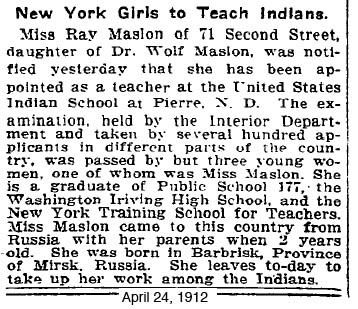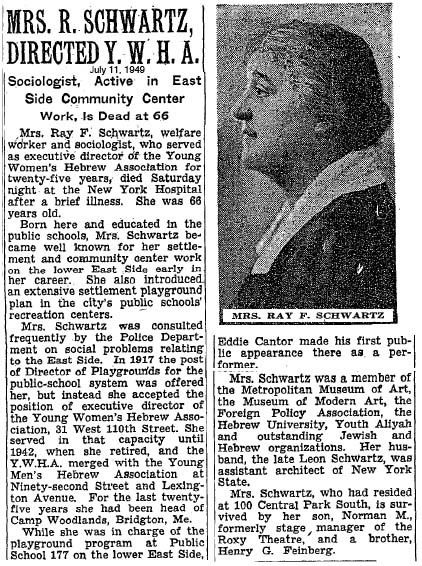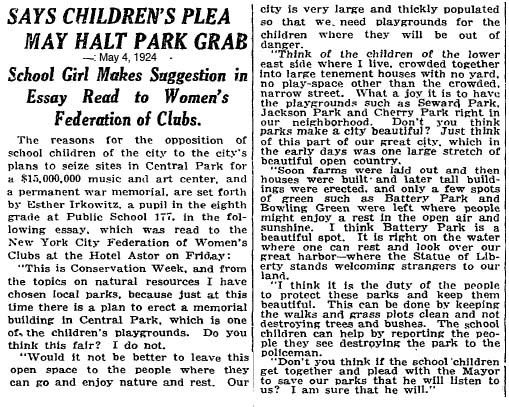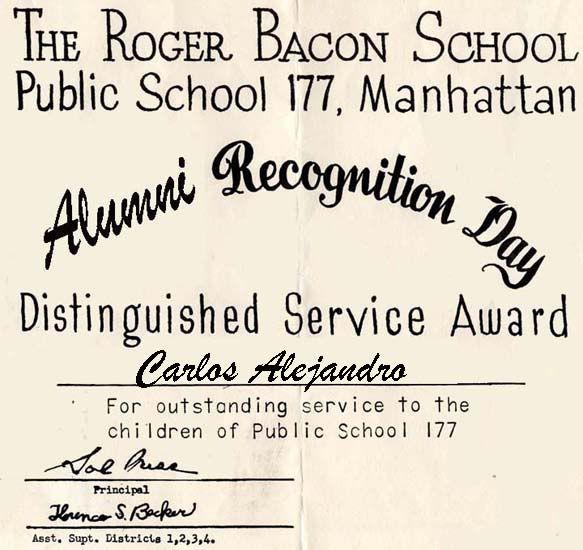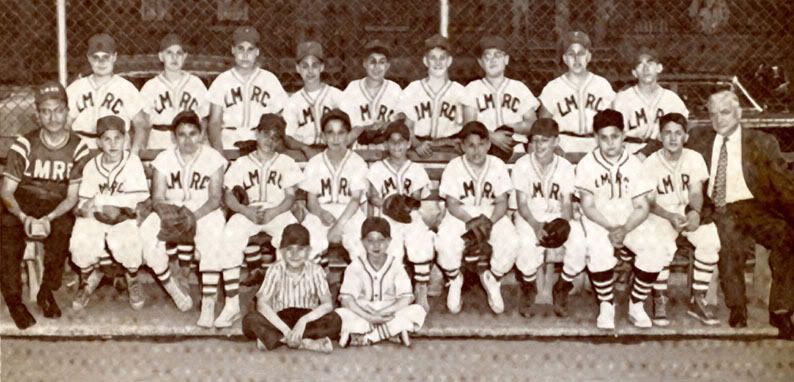Showing posts with label PS 177. Show all posts
Showing posts with label PS 177. Show all posts
Monday, April 16, 2012
PS 177: Built In 1899
Somewhere in this blog I have it as 1903. Other KVers recall seeing a marker on the building to that effect. Maybe it was begun in 1899. from the mcny collection
Friday, October 28, 2011
School Plaque History Redux
originally from the early days of pseudo-intellectualism
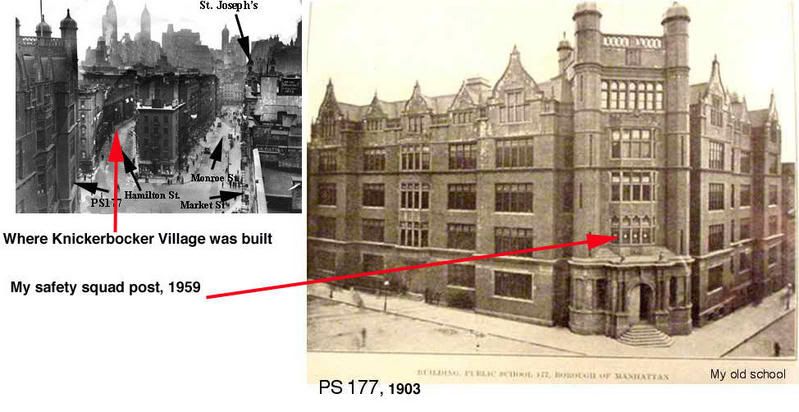
From August of 2005:
A couple of views of PS 177. Last year I met Gin Gee Moy, the former principal of The Meyer London School (PS 2 on Henry Street). Not too long after I graduated PS177 in 1960 the building was torn down and replaced by PS 2. There had also been an older PS 2 before on Henry Street. Mr. Sol Press had replaced Mr. Gregor at 177 in 1959 as principal and went to PS 2 with the 177 faculty. Gin Gee became part of that faculty and worked with Mr. Press. She also knew many of my old teachers. I just about remember them alin order from K-6 : Mrs Horowitz, Mrs. Smith, Mrs. Lizzio, Mrs. Peck, Mrs. Apat, Mrs. Feuer, Mrs. Decker and Mrs. Jonas. Mrs. Jonas went out on pregnancy leave in the 6th Grade and we had some weird subs: Mrs. Fels, who said she was related to the Fels-Naptha family and Mrs. Lebergott. BTW Gin Gee looks a whole lot better than I do. She also told me that Mrs. Lizzio is still alive and in her 90's. I think 177 was the Roger Bacon school.
a repeat of a slide show of some LES school plaques done also in August of 2005

From August of 2005:
A couple of views of PS 177. Last year I met Gin Gee Moy, the former principal of The Meyer London School (PS 2 on Henry Street). Not too long after I graduated PS177 in 1960 the building was torn down and replaced by PS 2. There had also been an older PS 2 before on Henry Street. Mr. Sol Press had replaced Mr. Gregor at 177 in 1959 as principal and went to PS 2 with the 177 faculty. Gin Gee became part of that faculty and worked with Mr. Press. She also knew many of my old teachers. I just about remember them alin order from K-6 : Mrs Horowitz, Mrs. Smith, Mrs. Lizzio, Mrs. Peck, Mrs. Apat, Mrs. Feuer, Mrs. Decker and Mrs. Jonas. Mrs. Jonas went out on pregnancy leave in the 6th Grade and we had some weird subs: Mrs. Fels, who said she was related to the Fels-Naptha family and Mrs. Lebergott. BTW Gin Gee looks a whole lot better than I do. She also told me that Mrs. Lizzio is still alive and in her 90's. I think 177 was the Roger Bacon school.
a repeat of a slide show of some LES school plaques done also in August of 2005
Saturday, December 25, 2010
Saturday, May 22, 2010
Dear Mr. Picasso, Part 2
Picasso Missing
a follow up to a post from last year. I had missed a few of the pages from the article
a follow up to a post from last year. I had missed a few of the pages from the article
from a May 18, 1962 Life Magazine article. Third graders from PS 177 visited a Picasso exhibit. I reformatted the original for easier reading and added some pics to highlight what some of the letters were describing.
Tuesday, April 27, 2010
Saturday, April 3, 2010
John Forsythe: Who's Almost Who In KV History
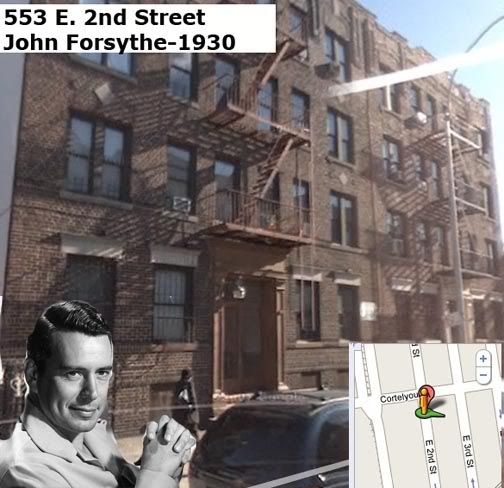
John earns the distinction by going to Abraham Lincoln High School, a destination for many KVer's who made the move to Brighton Beach to the Warbasse and Trump Houses in the mid sixties. And a great memory from Paul Levine:
Since you mentioned John Forsythe in KV blog, I thought I'd share a PS 177 connection and a couple of degrees of separation. He was in an episode of a Kraft show; it escapes what it was called, possibly Kraft Mystery Theatre or something. He was starring in an episode and they needed a playground scene. The advance crew came to 177 and selected a few kids from our class to be in the scene. It was shot in Coleman Oval and I had to bring my baseball glove the scheduled day to have a catch with someone in my class during the scene. We were in the background during filming and John Forsythe was in the foreground with a couple of actors. It was one of my greatest days at 177: got to skip class, have a catch AND got paid for it.
postscript, the episode was:
Kraft Mystery Theater" Go Look at Roses. It aired on Wed, September 11th, 1963 and starred John Albright, Norman Fell, John Forsythe and Cathleen Nesbitt
Labels:
coleman oval,
john forsythe,
PS 177,
who's almost who
Tuesday, February 2, 2010
Elsie Fels: 1930
 This could be our Mrs. Fels. The Fels' came from Virginia originally. Perhaps she was married to the namesake son or the grandson of the the Fels' family, Joseph. The daughter's name of Barbara? There were Barbara's in the Fels family before. Maybe this namesake decided to seek another means of livelihood by coming to New York? Here he manages an oil business, a gas station? btw that(319 E. 125th Street) address is currently a gas station on First Avenue and 125th Street. Maybe in later life Mrs. Fels was a widow and worked as a substitute teacher.
This could be our Mrs. Fels. The Fels' came from Virginia originally. Perhaps she was married to the namesake son or the grandson of the the Fels' family, Joseph. The daughter's name of Barbara? There were Barbara's in the Fels family before. Maybe this namesake decided to seek another means of livelihood by coming to New York? Here he manages an oil business, a gas station? btw that(319 E. 125th Street) address is currently a gas station on First Avenue and 125th Street. Maybe in later life Mrs. Fels was a widow and worked as a substitute teacher.
Monday, December 14, 2009
Shawn Slevin: New Yorker Of The Week
If memory serve's me correctly Shawn is, or was, a Grand Street resident and the sister of former PS 177er Elaine Katz.
from ny1.com
The latest New Yorker of the Week is making a big splash with more than 400 kids and 47 volunteers. NY1's Rebecca Spitz filed the following report.
When Shawn Slevin says when she was five years old, she almost drowned. After being afraid of the water for four years, she was finally able to get back in the pool.
"There was a swimming program that started in my local community and my parents coaxed me back into the water, and I was competing within the first year," says Slevin.
After Slevin stopped competing when she was in college, she became a swim coach for teams around the city. Three years ago, she decided to start her own not-for-profit swim team called The Swim Strong Foundation.
"I really wanted an opportunity to bring the principles that I learned and developed over the years out to a broader community," says Slevin.
She instructs more than 400 students of all skill levels, and the older kids mentor the younger ones.
"I really like the way she uses the older students to help the younger students, because she really does that right from the very beginning," says parent Ellen Fee.
"Since she helped me a lot in swimming, I wanted to pay back the favor, and I love teaching," says Abby Nicolas, a former student and volunteer.
The program is run entirely by volunteers at two pools in Queens and one in Brooklyn. Twenty-seven students have full scholarships, while the other swimmers pay between $9 and $15 for an hour-long lesson. The money is used to pay for the pool time.
"We want it to be more accessible for our families who can’t afford that," says Slevin.
Last month, Slevin started a swim program in Far Rockaway, Queens. She says it's especially needed in that community after several drownings occurred over the summer.
"Drowning is the second-largest cause of death for kids, and African-American kids drown three times as more as any other demographic, and we really want to make a change to that," says Slevin.
Slevin says she wants to help others avoid the experience she had as a child.
"I would love this to be not only a national program but a global program, because drowning is an issue all over the world," she says.
So, for giving kids an opportunity to dive into the water with confidence, Shawn Slevin is the latest New Yorker of the Week.
For more information about the Swim Strong Foundation, call 1-646-269-7897 or visit www.theswimstrongfoundation.org.
Wednesday, September 23, 2009
African Burial Ground Tour: September 22, 2009
And added plus of the tour is that I met Judy Hinson who grew up in the Smith projects and went to PS 177. Ranger Cyrus rocks!
Friday, September 18, 2009
Tuesday, September 15, 2009
That Wonderful Year: 1959
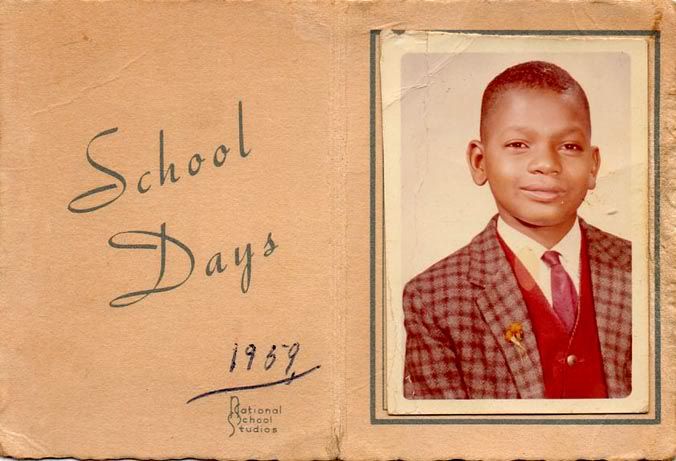
Above Donald Singletary sent along his PS 177 photo from 1959
Below a new book about the year that the author considers a turning point
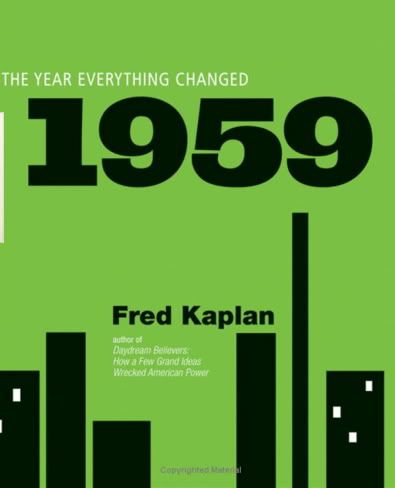 from amazon, an excerpt from reviews
from amazon, an excerpt from reviewsSlate columnist Kaplan takes a contrarian view to the common wisdom that the '60s were the source of the cultural shift from pre-WWII traditions to the individualistic, question-authority world of today. In Kaplan's view, the watershed year in this transformation is 1959. He delves into that year's cultural and political scene, citing Miles Davis and his revolutionary album Kind of Blue; William Burroughs and his equally revolutionary novel, Naked Lunch; and the opening of Frank Lloyd Wright's radically designed Guggenheim Museum in New York City as examples of fundamental breaks with past conventions. Kaplan's case is cemented by three 1959 events that he convincingly argues were catalysts for paradigm changes in relationships between men and women (the pharmaceutical company Searle sought FDA approval for the birth control pill), in how citizens view their government (the first American soldiers were killed in Vietnam) and in communications and information transfer (the microchip was introduced to the world). Kaplan doesn't quite convince that 1959 was “the year when the shockwaves of the new ripped the seams of daily life,” but his writing is lively and filled with often funny anecdotes as he examines some key elements in the transition from the mid to late 20th century. 16 b&w photos. (July) (Publishers Weekly, May 4, 2009)
Friday, September 11, 2009
Who's Who In Alfred E. Smith Projects History
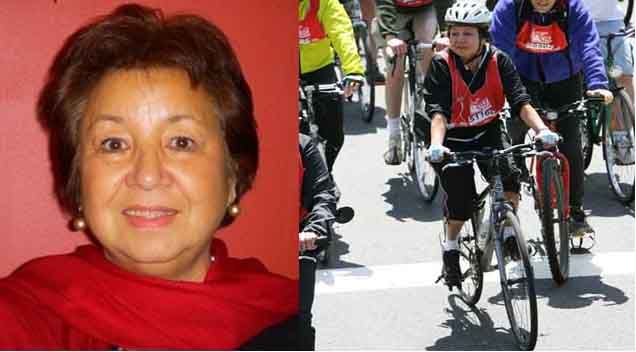
Back in August I got an email from Nancy Sing-Bock, a Smith Projects' alumnus, about an email thread concerning Woodstock
I had asked my mother permission to go to Woodstock. What a fool I was. I should have just went.
in the email she mentioned another ex "Smith-ite"
I have been in touch with Ethel Zai who grew up in 388 Pearl St, a Smith girl. She is 1/2 Chinese and 1/2 Mexican. Our fathers came from the same village in China. We are unofficial cousins. I have forwarded her the KV link. She was one of three girls and had 2 stepbrothers. She is also a principal in Hastings.
There must be something about the Smith Projects producing school principals?
Lily Din Woo, a JHS 22 and life-long friend of KVer Susanne Spitzer (Pelly), is also a well respected principal in Chinatown. I don't know if she hails from Smith as well.
Anyway I managed to get in touch with Ethel (Zai-Fiorello) through Nancy and she has been added to the growing KV family. By coincidence our paths must have crossed while I was working in CSD1 on the Lower East Side. We know many people in common.
From Ethel
Hi David, Yes, I'd love to join. I actually attended P.S. 177 for K,1,2 then transferred to P.S. 1, then to Transfiguration on Mott Street. My family grew up in the Smith projects since 1952. We lived in Orchard Street before then. I'm so happy to say that I made it out of the projects, had many wonderful experiences and some not so good. I'm now in Westchester and found out about your site through my "cousin" Nancy Sing, both our dads were from China. I'm a Principal in a Westchester School District. I started teaching on the Lower East Side, then went to Harlem, then Orange County NY and now here! Keep in touch.
Labels:
PS 177,
schools,
smith projects,
transfiguration,
who's who
Saturday, June 20, 2009
A KV Father's Day 2009
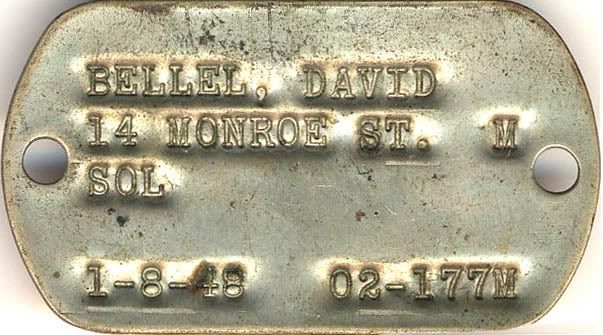
Cleaning up my basement I found this among the stuff I salvaged from my parents apartment. I wonder what the 02 next to PS 177 means? Maybe the school district it was in then?
From Elinor:
PS 177 WAS in Community District 2.....I taught for short while in PS 42 on Hester St. and that was District 2 also.
from Cliff
02 on your dog tag could be the postal code. KV addresses back then, before the days of Zip Codes, was New York 2, NY.
Tuesday, April 28, 2009
Positively 4th Street On 92nd Street This June
"Positively 4th Street" by Bob Dylan. Footage taken from D.A. Pennebaker's "Don't Look Back" and Dylan's 1965 press conference.
Arlene Lackow's husband Bob Levinson will be teaching a course on Dylan at the 92nd Street Y this summer
A Participatory Workshop Examining Bob Dylan’s Life, Art, Music and Politics
Bob Dylan-International icon, Oscar/Grammy award winning singer/songwriter, movie-maker, earth-shaker. He’s a giant and a genius as well as a multi-dimensional artist who is universally revered and respected for his stunning achievements in music, art, poetry and politics, and now in literature as well as on film. Dylan changed America with his powerful music for the first time in 1962 and continues to do so today with mold-breaking CD’s and a ‘Never Ending Tour’ made up of startling concert performances. Say something about him and you'll get an impassioned range of adoring and/or critical responses-'He's the Voice of his Generation,' 'He can't sing,' 'Is he still around’ or, 'His latest CD is his best ever!" Dylan’s Chronicles I was a Times Best Seller and a National Book Award nominee, Martin Scorsese’s Dylan Documentary, ‘No Direction Home,’ was universally praised, winning countless awards. Bob’s on XM/Sirus Radio every week. Join us in this intellectually stimulating, unique, student-friendly workshop where we’ll examine Bob Dylan’s remarkable life, complex career, legendary music and unique forays into the known and unknown.
Class Date-Thursday, June 11, 2009
Time 7-10 PM
CED # is 9353
Section is C1
Course Title is "Like A Rolling Stone"
Thursday, June 11, 2009
Time 7-10 PM
kv chatter, from Sarah
Our 5th grade teacher, Sheila Shankman, sure was hip. She wore her hair in a Barbra Streisand 'page-boy', after all. One morning Miss Shankman came to class very, very excited. She called the class to order and announced that the night before, she had seen a genius that we just had to know about. Mrs. Lapping wheeled in the school's 'victrola' and Mrs. Shankman, slid an LP out of its cover showing a man and woman strolling arm in arm down a foggy, blue-ish, cobblestone street. I don't know what songs were on the Top 10 list at the time but my musical tastes ran the gamut of Shelley Fabres' Johnny Angel to the Broadway cast album of Anthony Newley's Stop the World I Want to Get Off. I am sure that my classmates were likewise musically entertained because once Mrs. Shankman placed the needle on the record and the nasal strains of Dylan's voice were in the air - we all looked at each other in stunned silence. Had Miss Shankman gone crazy over night? You called this music..., genius yet? A few seconds later and as the giggles infected the entire class, Miss Shankman picked up the arm of the record player, slipped the album into the cover and went on with the lessons of the day. That was the first time I heard Dylan.
from Marv
We went to Dylan's "Rolling Thunder Review" concert in 1975 in New Haven, Ct. Laura was already at her due date with Becky our oldest daughter and the womb was definitely rocking to the music. We occasionally remind Becky that that was the first concert she attended. She was born a few days later at Yale New Haven Hospital. I'm sure Becky would be happy to be interviewed in regards to her memory of the concert! Hey Al weren't (aren't) you a big fan of Dylan?
from Bob
I was at that concert in New Haven--maybe even with Al, I don't remember. Don't recall a pregnant woman rocking. Those were the days you could understand the words coming out of Dylan's mouth.
Labels:
bob dylan,
kv chatter,
lackow,
PS 177,
the 60's
Monday, March 30, 2009
PS 177 Graduation: June 1963
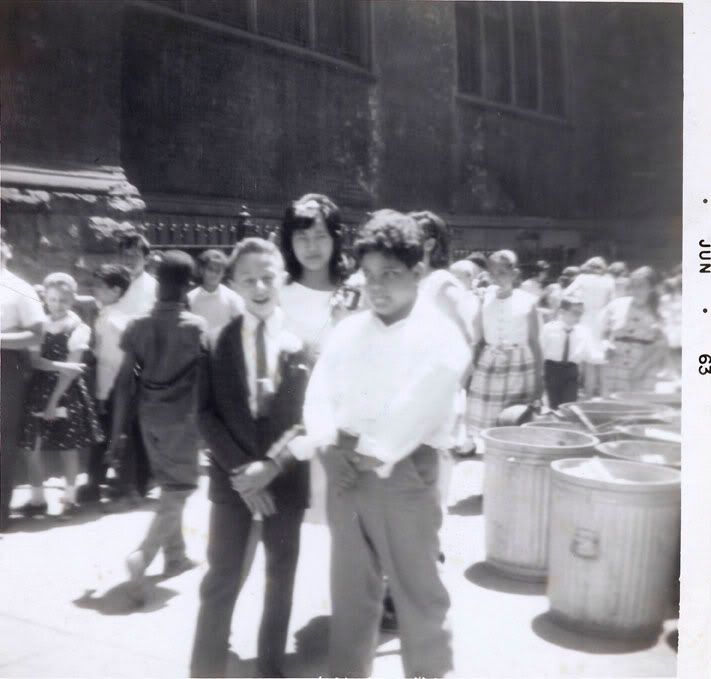

Sent by Carlos Alejandro
Top Picture
Howie Silverstein, Jacqueline Lee, Carlos Alejandro
Bottom Picture
Sheldon Austin, Donald Singletary, Billy Owens, Bruce Buell
Howie Silverstein, Carlos Alejandro, Eddie Moy
I think Donald Singletary had a cousin Ronnie Bly who played football for the Giants .. Donald was a great kid, he was like our own Will Smith ...one time he came to my house to play after school and I remember for years the story my Mom used to tell how she felt uncomfortable the time we had a 'girl' cleaning the house and I brought a black friend over to play .. the 'girl' of course was black too ...... Billy Owens was also one of the nicest guys, smiled and laughed a lot ...I played against him in little league, he played for Mariner's Temple which was predominantly if not all black ... one of my favorite little league stories is from a game against Mariner's Temple ... it was Spring of either '62 or '63 and it was a playoff game which meant win the game or the season is over .. I was playing right field, the game was tied in extra innings and they had a runner on 2nd base... on the last play of the game there's a base hit to me in right field, I charged the ball and fired home trying to throw out the runner from 2nd . it was a pretty good throw but the runner still scored ahead of the tag and Mariner's beats us, ending our season ... as I'm walking off the field dejected a tall black priest walks out of their dugout right up to me ... puts a hand on my shoulder and says, "..son, Mohammed himself couldn't have made a better throw .." ... one of those special moments that could only have happened on the LES ..
Howie
a follow up from Carlos
Billy Owens was one of the nicest guys I've ever known. We went on to JHS 22 together. He used to walk from the Smith Houses past my apartments, the LaGuardia Houses, and we would walk to Houston and Columbia Streets together until he got a bus pass. Sometimes he would walk with me to my buildings and then pick up the bus. He and Gary Jones were good friends. Didn't Gary play Little League, too. Does anybody know what happened to any of the other kids like: Rochelle Murphy, Eileen Rivela, Elaine Katz, Jacy ? (from Pearl Street?), Trudy Babits, Eddie Moy, ...
What was the name of the store right across the street from the school? That's where I would get those Ivy League plasticky book covers for my notebooks and or textbooks.
Here's a memory I have: One day at lunch time a bunch of us, a big bunch, decided to go down to Battery Park to see the President's motorcade at South Ferry. John F. Kennedy in a big black Lincoln with the weird doors. When we got back Mrs. Meiers was confused about why we had "cut" class but when she heard she just kinda laughed it off. Anybody else remember that?
from Donald Singletary
KD COBRA said...
FROM DONALD SINGLETARY - WOW! What a great surprise. I lucked up on this blog while "Googling" myself!
That second photo with Billy Owens and Howard Silverstein, etc. -- that's NOT me in the photo. Don't know who it is.
Anyway, I've been putting together some stuff for an LES book of my own. I connected with a writer who used to teach at P.S. 2 -- Leslie Kandell. She has found many of her former students. I also have some old photos I'd love to share. Glad you guys are well. Sadly, Billy died in November 1990. Many others have passed too. Glad you guys are all right. There's a Smith Projects Reunion this weekend on Saturday in the park by the Gym. Many "old-timers" come around.
Would love to keep in touch please email me at:
kdonald53@aol.com
thanks!
Monday, March 16, 2009
Cliff's KV Notes, Part 10: Why, Some Of My Best Friends Are Jewish
Below: The Pike Street Synagogue, now a Chinese Baptist Temple, where Cliff's grandfather was one of the Cohens that blessed the congregation
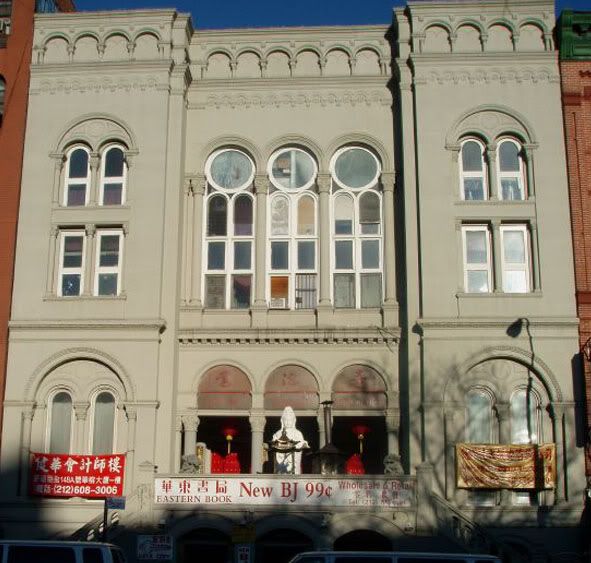
Up until the second grade, I associated with Jews, because KV had a heavy Jewish population, and the kids in nursery school and in the kiddie playground were Jewish. I don’t remember any discussions in my home about associating or not associating with any particular group. So I had no preconceived bias when in the second grade I came in contact with Italians. They were a curiosity, and besides, they didn’t live in KV. They lived in the tenements on Monroe St. At first, I supposed they differed from Jews. But I was hard pressed to see any differences that mattered. There was George Martini, the only guy in class as short as I was. George and I were close—only because the class would have to line up in size place—alphabetical order being something way beyond our capabilities.
At the other end of the size spectrum was Anthony Baldimere, who seemed to be more “Italian” than the other Italians. Tony was a good guy. When the first Puerto Rican, a kid named Ephraim, joined our class, he was more of a curiosity than the Italians. I remember picking up snippets of conversations between the older kids about “Spics” starting to move into the neighborhood, and the term made no sense to me. But the impression I got was that they weren’t going to give them the Key to the Neighborhood. Ephraim had some problems with English, but I don’t think he was involved in any trouble (fights) because of his background. Sure, there were fights all through my years at 177, but they didn’t seem to be centered on ethnicity.
The thing that shocked me about Ephraim, was one day in class, the teacher asked each one of us what we had for breakfast. I guess it was a lesson on nutrition. All the answers were basically the same, OJ, eggs, cereal etc. When it came to Ephraim, he answered “coffee.” The teacher kind of freaked. All he had was a cup of coffee for breakfast, and coffee for kids in our house, was akin to feeding them booze or dope.
I forget what grade I was in, but the class was practicing for some kind of Christmas performance at assembly. We had to sing a couple of carols. Looking back, it’s pretty funny—a bunch of mostly Jewish kids singing “O Come All Ye Faithful.” The words didn’t mean much at the time. If we had been told to sing a song with a bunch of racial epithets, we probably wouldn’t have thought twice. The teachers were supposed to know what they were doing. They said. "Learn the song," and we learned it—and sang it. All except Marilyn Shore (Schorr?) She went along with the program, singing the hymn except when it came to the money line “Christ the Lord.” Then she clammed up. I always looked at her during practice and the actual performance. She just zipped at that line.
When one of the Catholic kids told me that Jesus Christ was the Son of God, it was a pretty startling revelation. And who better to share it with than my super Orthodox Jewish grandfather. Since he was more “Godly” than anyone else in our family, I figured this would be more up his alley. Jacob U. Rothman lived in BE6 and was active in the Pike St. Shoul. He was one of the Cohens that blessed the congregation. Our family would go to the shoul twice a year during the high holy days, and when it came time for the blessing, we were all supposed to bow our heads close our eyes. “Don’t look,” my father commanded, as if lightning would strike anybody peeking. ‘Course I couldn’t resist the temptation. There were maybe five or six Cohens at the front of the shoul, with their prayer shawls (Talis) pulled over their heads, reciting the blessings, and waving their outstretched arms around. It looked pretty cool (Whazzat, a thunderstorm brewing?)
In his apartment, my grandfather was into his prayer books most of the time. That was when he wasn’t arguing with my grandmother. It would have been a lot cooler had they argued in English instead of Yiddish so my sister and I could have understood what was going on. But we picked up the gist of things from tone inflection and volume. My grandfather would make little clucking noises aside from the normal prayer drone. He was really connecting with the Spirit and not just going through the motions.
So, I thought he’d be really excited when I told him, “Zeida, did you know that Jesus Christ is the son of God?” Yeah, he was excited all right. Now, If Zeida had been like most any other orthodox Jew, he would have settled the matter simply by throwing me out the window. Instead, he was pretty cool and said, “God never got married.” (Guess he didn’t buy into the virgin birth scripture.) And that was that. I had a sneaky suspicion that if I pressed the matter I would have received a good rap in the mouth (schmise in punim). He was pretty fast with a backhand, as I had learned on earlier occasions when I tested the limits of his patience.
One grandfather story: My grandfather once was involved in an altercation with a bus driver, who he believed had shortchanged him. My grandfather always carried a cane, although it was more for fashion than health. Anyway, my grandfather lost his temper, and in his rage, tried to hurl the worst possible insult he could think of at the driver. He shook his cane at the guy and yelled “You…you…PORK you!”
The first black (African-American—pick a label), in my class was also around the third grade. His name was Kenneth. He was a curiosity too—especially the shape of his head—slightly elongated. As a kid growing up, anything “different” was a curiosity, not a threat, or someone to be looked up to or down upon. For instance, There was a guy in the neighborhood, maybe in his 30s at the time, who must have had cerebral palsy as a child. He was spastic and kind of flopped around when he walked. And it badly affected his speech. He was a curiosity too. My mother used to slap me when I tried to imitate him at home.
I used to love prowling the streets and explore the buildings that were being torn down on Cherry St. opposite KV to make way for the Tanahey playground. I found a bunch of canceled checks and bank statements with the name “Moderano” in one. There was a girl in my second grade class named Geraldine Moderano, so I figured she was related. I brought the checks to school and gave them to her.
One of the buildings on Cherry that was being demolished had most of the first floor torn out, leaving a gaping black hole to the basement. I was curious what was in the hole, and not having access to a flashlight, returned with a compadre equipped with some Hanukkah candles and matches. We lit some candles (without saying the baruchas) and tossed them down the hole. Most went out, but a couple didn’t, and it showed us what was in the hole—paper. Lots of paper. We got out of there fast, and later heard the fire engines coming.
The Italians seemed to be a more adventurous lot than the Jews and some belonged to “gangs.” At the time, to the best of my knowledge, the gangs were just a group of guys hanging out together and not doing anything terribly bad. For some reason, I was invited to join Vinnie Gambino’s gang for a short period. I don’t know why, I wasn’t a tough guy or anything like that. Fighting wasn’t my thing because a guy could get hurt doing that. Maybe they found a Jewish kid to be a curiosity. Anyhow, the initiation into the gang was that you had to break a window when there was a cop in the vicinity.
The stores and buildings on Catharine St at the time were being torn down to make way for the Smith projects. The rear of the buildings were pretty much demolished, but the facades on Catharine were more or less intact. There was a shoe store near Madison that had a beautiful huge oval window.
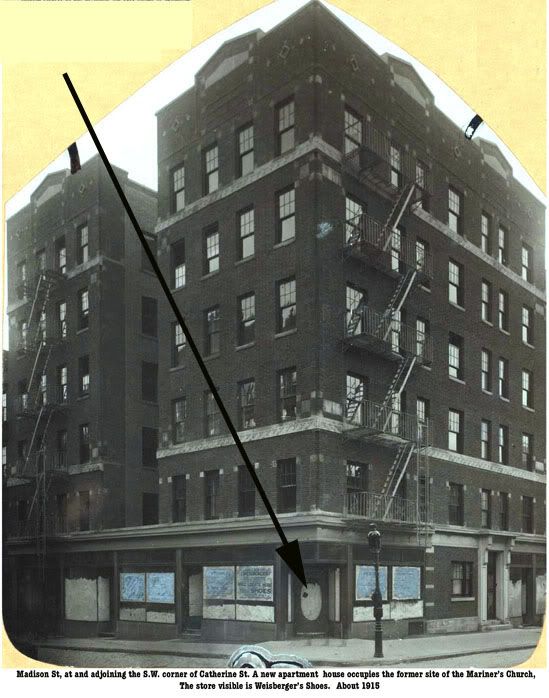
I remember the store when it was still in business. Now all that remained of it was a ghostly storefront. There was a cop on the corner of Madison and Catherine. The gang approached the building over the rubble of bricks at the rear. One of the guys handed me a brick and pointed to the plate-glass window. Moment of truth. This was beyond Jewish-caliber playful “mischief.” This was Italian “trouble.” Like something you could get arrested for. There was a moment of indecision, but the pressure of “being accepted,” overruled my trepidation. I came up with a solution. The rule required a broken window, but it didn’t specify how broken. I lobbed the brick as easy as I could toward the window hoping to make just a little innocuous hole that would fulfill the requirement. Instead the entire window came crashing down all over the sidewalk. I couldn’t believe how loud it was. And the cop came running. The gang took off, and while I was not a particularly fast runner, my adrenaline helped put me at the head of the pack, with my feet barley touching the ground.
One of the perks in joining the gang was that one of the kids would make you a slingshot out of a piece of angle iron and a strip of rubber from an inner tube. It cost 20 cents. It was a great slingshot, with good range and accuracy. The kids in the gang could bust the syrup bottle on the ices man’s cart from maybe 30 feet away. The ices man had a block of ice that he kept covered with a piece of burlap. He’d make you fresh ices by folding back the burlap, scraping the ice, piling the shavings into a paper cup and pouring your choice of syrup over the ice.
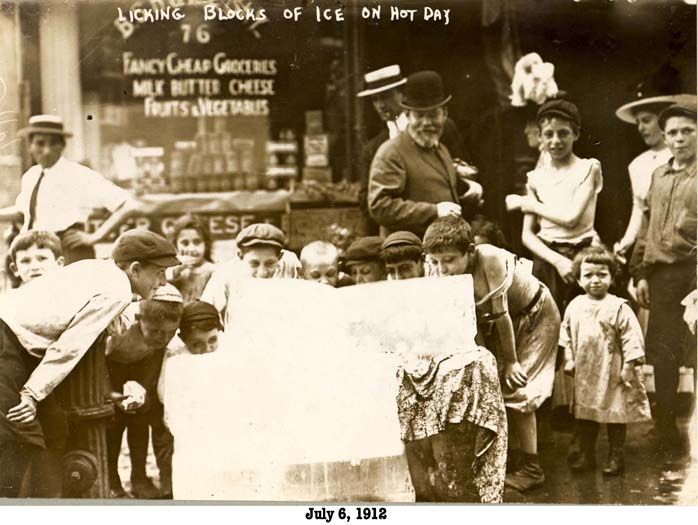
My father saw the slingshot when I brought it home. I don’t remember the lie I made up as to how I obtained it. But he was cool with the slingshot until I snapped it in my sister’s face a couple of times. Then he took it away, never to be seen again. He didn’t know that I was a member of the Gambino gang. In the gang, if you did something that Vinnie didn’t particularly care for, the punishment was the “hot knife.”—a blade heated in a flame and then applied to your arm. When I got wind that I was going to be a candidate for the hot knife, I suddenly lost interest in being part of the gang. After all, Jewish kids didn’t indulge in this kind of "barbarous" behavior. They just punched. I was told years later that Vinnie Gambino met his demise in a horrific car crash when he went into a wall on Pike St., cracked his head open and spilled his brains. I was told that the priest from St. Joseph’s got sick and threw up while administering Last Rites. I was told that Vinnie’s family wanted to erect some kind of memorial in his honor, but they came up short on his socially redeeming qualities. I think as far as they got was that “He was kind to the children.” Which he wasn’t.
The next chapter of Cliff's KV Notes
The previous chapter of Cliff's KV notes
postscript from Cliff
postscript from me

Up until the second grade, I associated with Jews, because KV had a heavy Jewish population, and the kids in nursery school and in the kiddie playground were Jewish. I don’t remember any discussions in my home about associating or not associating with any particular group. So I had no preconceived bias when in the second grade I came in contact with Italians. They were a curiosity, and besides, they didn’t live in KV. They lived in the tenements on Monroe St. At first, I supposed they differed from Jews. But I was hard pressed to see any differences that mattered. There was George Martini, the only guy in class as short as I was. George and I were close—only because the class would have to line up in size place—alphabetical order being something way beyond our capabilities.
At the other end of the size spectrum was Anthony Baldimere, who seemed to be more “Italian” than the other Italians. Tony was a good guy. When the first Puerto Rican, a kid named Ephraim, joined our class, he was more of a curiosity than the Italians. I remember picking up snippets of conversations between the older kids about “Spics” starting to move into the neighborhood, and the term made no sense to me. But the impression I got was that they weren’t going to give them the Key to the Neighborhood. Ephraim had some problems with English, but I don’t think he was involved in any trouble (fights) because of his background. Sure, there were fights all through my years at 177, but they didn’t seem to be centered on ethnicity.
The thing that shocked me about Ephraim, was one day in class, the teacher asked each one of us what we had for breakfast. I guess it was a lesson on nutrition. All the answers were basically the same, OJ, eggs, cereal etc. When it came to Ephraim, he answered “coffee.” The teacher kind of freaked. All he had was a cup of coffee for breakfast, and coffee for kids in our house, was akin to feeding them booze or dope.
I forget what grade I was in, but the class was practicing for some kind of Christmas performance at assembly. We had to sing a couple of carols. Looking back, it’s pretty funny—a bunch of mostly Jewish kids singing “O Come All Ye Faithful.” The words didn’t mean much at the time. If we had been told to sing a song with a bunch of racial epithets, we probably wouldn’t have thought twice. The teachers were supposed to know what they were doing. They said. "Learn the song," and we learned it—and sang it. All except Marilyn Shore (Schorr?) She went along with the program, singing the hymn except when it came to the money line “Christ the Lord.” Then she clammed up. I always looked at her during practice and the actual performance. She just zipped at that line.
When one of the Catholic kids told me that Jesus Christ was the Son of God, it was a pretty startling revelation. And who better to share it with than my super Orthodox Jewish grandfather. Since he was more “Godly” than anyone else in our family, I figured this would be more up his alley. Jacob U. Rothman lived in BE6 and was active in the Pike St. Shoul. He was one of the Cohens that blessed the congregation. Our family would go to the shoul twice a year during the high holy days, and when it came time for the blessing, we were all supposed to bow our heads close our eyes. “Don’t look,” my father commanded, as if lightning would strike anybody peeking. ‘Course I couldn’t resist the temptation. There were maybe five or six Cohens at the front of the shoul, with their prayer shawls (Talis) pulled over their heads, reciting the blessings, and waving their outstretched arms around. It looked pretty cool (Whazzat, a thunderstorm brewing?)
In his apartment, my grandfather was into his prayer books most of the time. That was when he wasn’t arguing with my grandmother. It would have been a lot cooler had they argued in English instead of Yiddish so my sister and I could have understood what was going on. But we picked up the gist of things from tone inflection and volume. My grandfather would make little clucking noises aside from the normal prayer drone. He was really connecting with the Spirit and not just going through the motions.
So, I thought he’d be really excited when I told him, “Zeida, did you know that Jesus Christ is the son of God?” Yeah, he was excited all right. Now, If Zeida had been like most any other orthodox Jew, he would have settled the matter simply by throwing me out the window. Instead, he was pretty cool and said, “God never got married.” (Guess he didn’t buy into the virgin birth scripture.) And that was that. I had a sneaky suspicion that if I pressed the matter I would have received a good rap in the mouth (schmise in punim). He was pretty fast with a backhand, as I had learned on earlier occasions when I tested the limits of his patience.
One grandfather story: My grandfather once was involved in an altercation with a bus driver, who he believed had shortchanged him. My grandfather always carried a cane, although it was more for fashion than health. Anyway, my grandfather lost his temper, and in his rage, tried to hurl the worst possible insult he could think of at the driver. He shook his cane at the guy and yelled “You…you…PORK you!”
The first black (African-American—pick a label), in my class was also around the third grade. His name was Kenneth. He was a curiosity too—especially the shape of his head—slightly elongated. As a kid growing up, anything “different” was a curiosity, not a threat, or someone to be looked up to or down upon. For instance, There was a guy in the neighborhood, maybe in his 30s at the time, who must have had cerebral palsy as a child. He was spastic and kind of flopped around when he walked. And it badly affected his speech. He was a curiosity too. My mother used to slap me when I tried to imitate him at home.
I used to love prowling the streets and explore the buildings that were being torn down on Cherry St. opposite KV to make way for the Tanahey playground. I found a bunch of canceled checks and bank statements with the name “Moderano” in one. There was a girl in my second grade class named Geraldine Moderano, so I figured she was related. I brought the checks to school and gave them to her.
One of the buildings on Cherry that was being demolished had most of the first floor torn out, leaving a gaping black hole to the basement. I was curious what was in the hole, and not having access to a flashlight, returned with a compadre equipped with some Hanukkah candles and matches. We lit some candles (without saying the baruchas) and tossed them down the hole. Most went out, but a couple didn’t, and it showed us what was in the hole—paper. Lots of paper. We got out of there fast, and later heard the fire engines coming.
The Italians seemed to be a more adventurous lot than the Jews and some belonged to “gangs.” At the time, to the best of my knowledge, the gangs were just a group of guys hanging out together and not doing anything terribly bad. For some reason, I was invited to join Vinnie Gambino’s gang for a short period. I don’t know why, I wasn’t a tough guy or anything like that. Fighting wasn’t my thing because a guy could get hurt doing that. Maybe they found a Jewish kid to be a curiosity. Anyhow, the initiation into the gang was that you had to break a window when there was a cop in the vicinity.
The stores and buildings on Catharine St at the time were being torn down to make way for the Smith projects. The rear of the buildings were pretty much demolished, but the facades on Catharine were more or less intact. There was a shoe store near Madison that had a beautiful huge oval window.

I remember the store when it was still in business. Now all that remained of it was a ghostly storefront. There was a cop on the corner of Madison and Catherine. The gang approached the building over the rubble of bricks at the rear. One of the guys handed me a brick and pointed to the plate-glass window. Moment of truth. This was beyond Jewish-caliber playful “mischief.” This was Italian “trouble.” Like something you could get arrested for. There was a moment of indecision, but the pressure of “being accepted,” overruled my trepidation. I came up with a solution. The rule required a broken window, but it didn’t specify how broken. I lobbed the brick as easy as I could toward the window hoping to make just a little innocuous hole that would fulfill the requirement. Instead the entire window came crashing down all over the sidewalk. I couldn’t believe how loud it was. And the cop came running. The gang took off, and while I was not a particularly fast runner, my adrenaline helped put me at the head of the pack, with my feet barley touching the ground.
One of the perks in joining the gang was that one of the kids would make you a slingshot out of a piece of angle iron and a strip of rubber from an inner tube. It cost 20 cents. It was a great slingshot, with good range and accuracy. The kids in the gang could bust the syrup bottle on the ices man’s cart from maybe 30 feet away. The ices man had a block of ice that he kept covered with a piece of burlap. He’d make you fresh ices by folding back the burlap, scraping the ice, piling the shavings into a paper cup and pouring your choice of syrup over the ice.

My father saw the slingshot when I brought it home. I don’t remember the lie I made up as to how I obtained it. But he was cool with the slingshot until I snapped it in my sister’s face a couple of times. Then he took it away, never to be seen again. He didn’t know that I was a member of the Gambino gang. In the gang, if you did something that Vinnie didn’t particularly care for, the punishment was the “hot knife.”—a blade heated in a flame and then applied to your arm. When I got wind that I was going to be a candidate for the hot knife, I suddenly lost interest in being part of the gang. After all, Jewish kids didn’t indulge in this kind of "barbarous" behavior. They just punched. I was told years later that Vinnie Gambino met his demise in a horrific car crash when he went into a wall on Pike St., cracked his head open and spilled his brains. I was told that the priest from St. Joseph’s got sick and threw up while administering Last Rites. I was told that Vinnie’s family wanted to erect some kind of memorial in his honor, but they came up short on his socially redeeming qualities. I think as far as they got was that “He was kind to the children.” Which he wasn’t.
The next chapter of Cliff's KV Notes
The previous chapter of Cliff's KV notes
postscript from Cliff
I think I broke one of the big square windows in the shoe store--it wasn't the small one on the door.
postscript from me
I've heard that the crash that Vinnie Gambino was in took place on Pike and East Broadway near where there is currently a gas station and that it was a head on collision with another car at a high speed.
Sunday, March 15, 2009
What Was Mrs. Lapping's Husband Doing In Colchester, CT?
Below: Mrs. Lapping's in-laws
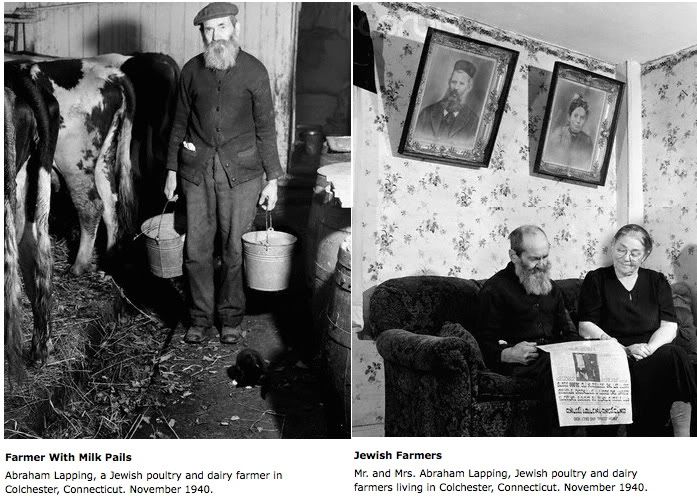
I was curious as to why Paul Lapping, an immigrant from Russia in the early 1900's, was living in Colchester, CT. I found this under the Colchester, CT town site.
I certainly get an education working on this blog

I was curious as to why Paul Lapping, an immigrant from Russia in the early 1900's, was living in Colchester, CT. I found this under the Colchester, CT town site.
I certainly get an education working on this blog
By 1900 farming had diminished and the rubber mill had closed, but this was a time for another new beginning for Colchester. The Hirsch Foundation of New York had discovered that Colchester was an excellent place for the settlement of European Jewish immigrants. By 1923, there were about 750 children recorded in the school census out of a total town population of 2,100. Since farming was no longer prosperous, many began to supplement their livelihoods in the summer by taking on boarders from nearby cities and New York.
Within the span of a few years, Colchester became the 20th Century's "Catskills of Connecticut". At least seven major hotels thrived including the Broadway House, owned by Abraham and Rose Jaffe, Harris Cohen's Fairview House, Julian Sultan's Hilltop Lodge, Schwartz's Kessler's Horowitz's and Barnett Dember's. The tourist industry boomed throughout the 1930s.
Postwar growth in neighboring towns led to a new era for Colchester. A new generation of suburban dwellers found Colchester to be an excellent "bedroom" community due to an improved highway system and its proximity to Hartford, Middletown and the Norwich/New London areas. During the 1950s the beach traffic brought many through Colchester to their favorite stops including Harry's, the Colchester Bakery and Levine's Coat Shop. The Route 2 by-pass of the town was completed in the 1960s. But for those who did not just pass through, Colchester's dedication to the public school system, its acceptance of all peoples and its quality of life increased its population to 7,761 by 1980. Today, over 300 years after the settling of Colchester, the population has grown to over 14,000.
Mrs. Esther K. Lapping
In 1930, she and her husband Paul were living at 144-44 Sanford Ave in Flushing, Queens. She was 29 and her husband Paul was 34. They were married in 1925. She was listed as a teacher and he was listed as a salesman of woolens

Paul Lapping's World War I registration card from 1918. He was living in Colchester, Connecticut and working as a farmer. He was born in Russia
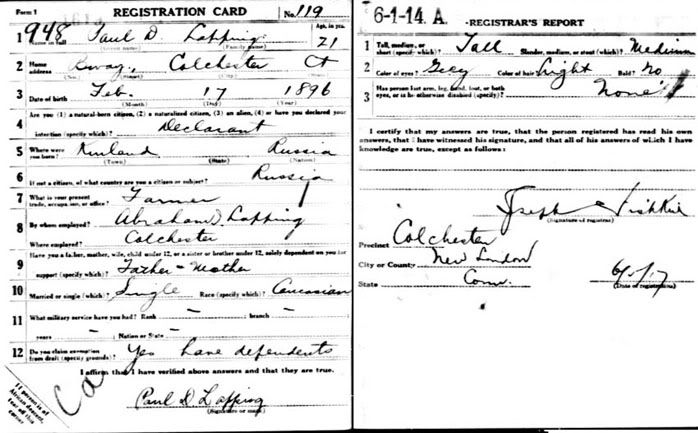
The Lappings both died in 1984. Esther in January and Paul in May

Paul Lapping's World War I registration card from 1918. He was living in Colchester, Connecticut and working as a farmer. He was born in Russia

The Lappings both died in 1984. Esther in January and Paul in May
Subscribe to:
Posts (Atom)


